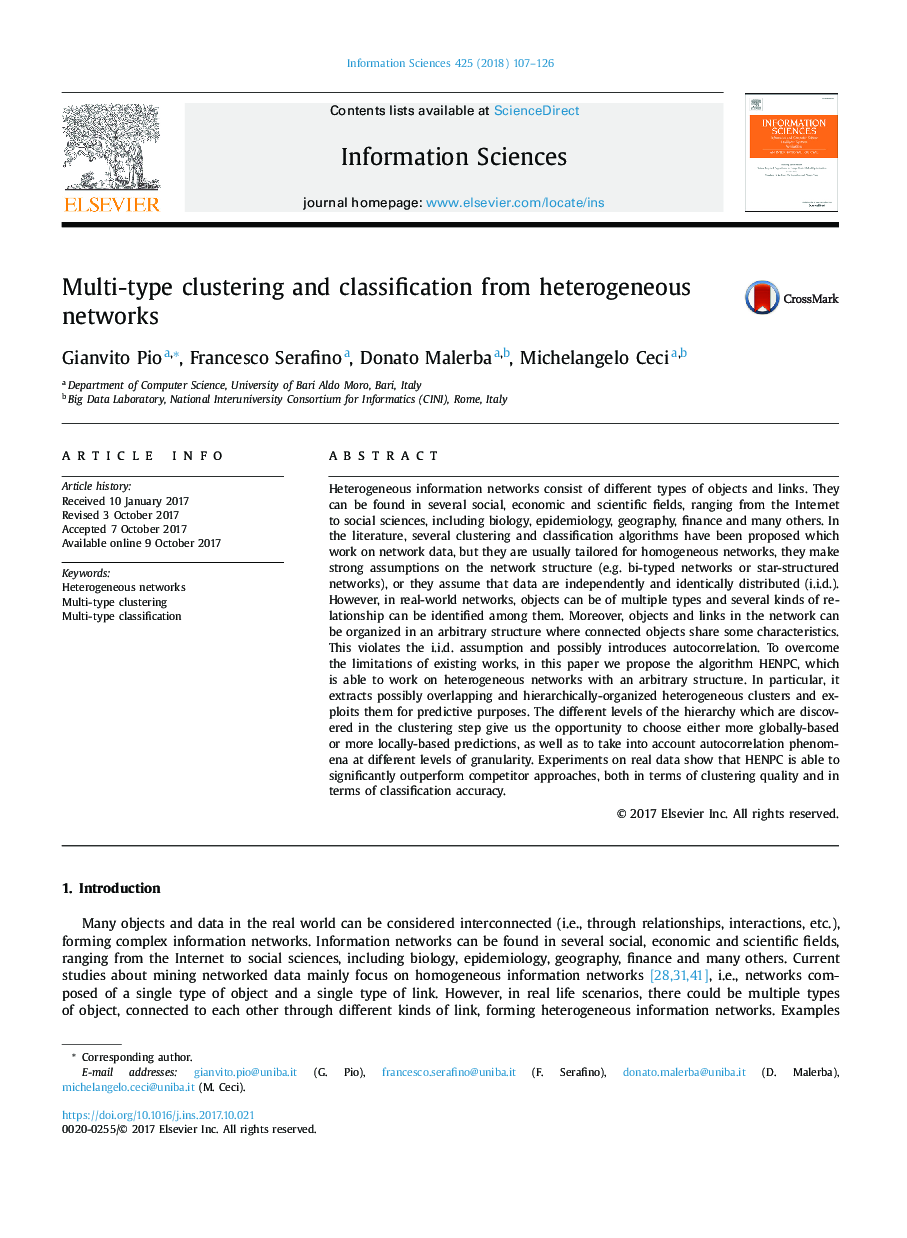| Article ID | Journal | Published Year | Pages | File Type |
|---|---|---|---|---|
| 6857048 | Information Sciences | 2018 | 20 Pages |
Abstract
Heterogeneous information networks consist of different types of objects and links. They can be found in several social, economic and scientific fields, ranging from the Internet to social sciences, including biology, epidemiology, geography, finance and many others. In the literature, several clustering and classification algorithms have been proposed which work on network data, but they are usually tailored for homogeneous networks, they make strong assumptions on the network structure (e.g. bi-typed networks or star-structured networks), or they assume that data are independently and identically distributed (i.i.d.). However, in real-world networks, objects can be of multiple types and several kinds of relationship can be identified among them. Moreover, objects and links in the network can be organized in an arbitrary structure where connected objects share some characteristics. This violates the i.i.d. assumption and possibly introduces autocorrelation. To overcome the limitations of existing works, in this paper we propose the algorithm HENPC, which is able to work on heterogeneous networks with an arbitrary structure. In particular, it extracts possibly overlapping and hierarchically-organized heterogeneous clusters and exploits them for predictive purposes. The different levels of the hierarchy which are discovered in the clustering step give us the opportunity to choose either more globally-based or more locally-based predictions, as well as to take into account autocorrelation phenomena at different levels of granularity. Experiments on real data show that HENPC is able to significantly outperform competitor approaches, both in terms of clustering quality and in terms of classification accuracy.
Keywords
Related Topics
Physical Sciences and Engineering
Computer Science
Artificial Intelligence
Authors
Gianvito Pio, Francesco Serafino, Donato Malerba, Michelangelo Ceci,
